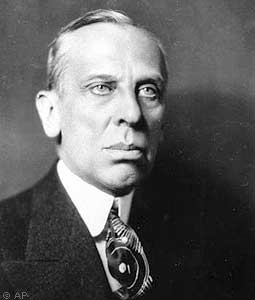Alfred P. Sloan (Alfred Pritchard Sloan)

Alfred P.Sloan (/sloʊn/; May 23, 1875 – February 17, 1966) was an American business executive in the automotive industry. He was a long-time President, chairman and CEO of General Motors Corporation. Sloan, first as a senior executive and later as the head of the organization, helped GM grow from the 1920s through the 1950s, decades when concepts such as the annual model change, brand architecture, industrial design, automotive design (styling), and planned obsolescence transformed the industry, and when the industry changed lifestyles and the built environment in America and throughout the world. Sloan’s memoir, My Years with General Motors, written in the 1950s exemplified Sloan’s vision of the professional manager and the carefully engineered corporate structure in which he worked. It is considered one of the seminal texts in the field of modern management education. Alfred P. Sloan is remembered for being a rational, shrewd, and very successful manager, who led GM to become the world’s largest corporation, a position it held for many years after his death. His rationality and shrewdness are also remembered by his critics as extending even to cold, plutocratic detachment or avarice. However, the magnitude of Sloan’s philanthropy suggests that he saw himself differently: as a man with greater talents and greater responsibilities than others, who was thus entitled to great authority but also obligated to, and committed to, beneficence.
Alfred P. Sloan and the management of GM in the 1930s and early 1940s – the time of the Great Depression, German re-armament, fascism, appeasement, and World War II – are part of a larger narrative about the complex nature of multinational corporations and how nationality of their members was irrelevant in some ways but relevant in others. The national governments on both sides of the Allied–Axis divide used the industrial capacity of GM – the Allies using Detroit and Vauxhall, the Axis using Adam Opel AG, GM’s German subsidiary – to churn out materiel for their war efforts. Like Henry Ford, the other “head man” of an automotive colossus, Sloan is remembered today with a complex mixture of admiration for his accomplishments, appreciation for his philanthropy, and unease or reproach regarding his attitudes during the interwar period and World War II. Alfred P. Sloan died in 1966.
Born
- May, 23, 1875
- USA
- New Haven, Connecticut
Died
- February, 17, 1966
- USA
- New York, New York
Cemetery
- February 17, 1966
- Laurel Hollow, New York
- USA


